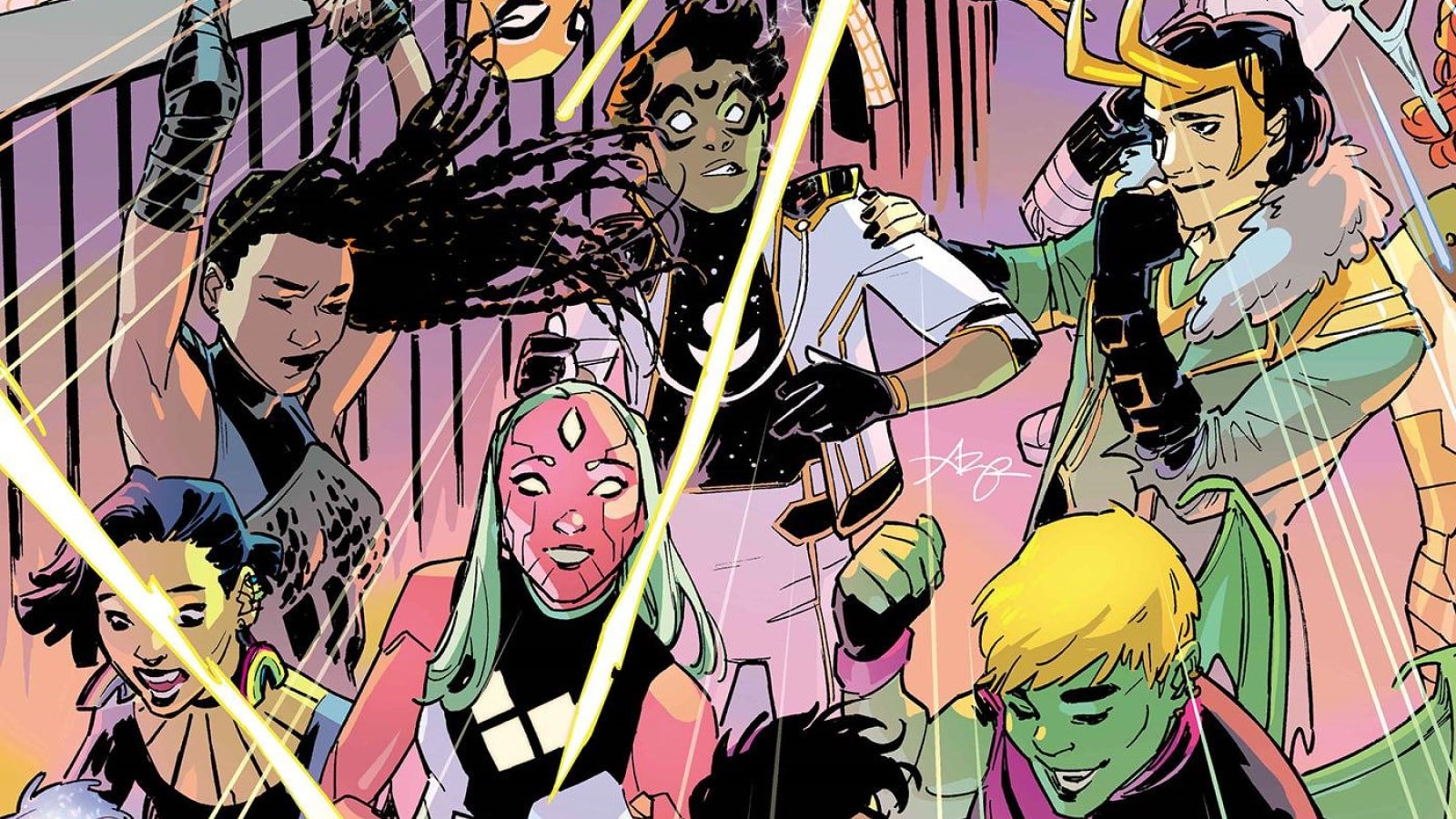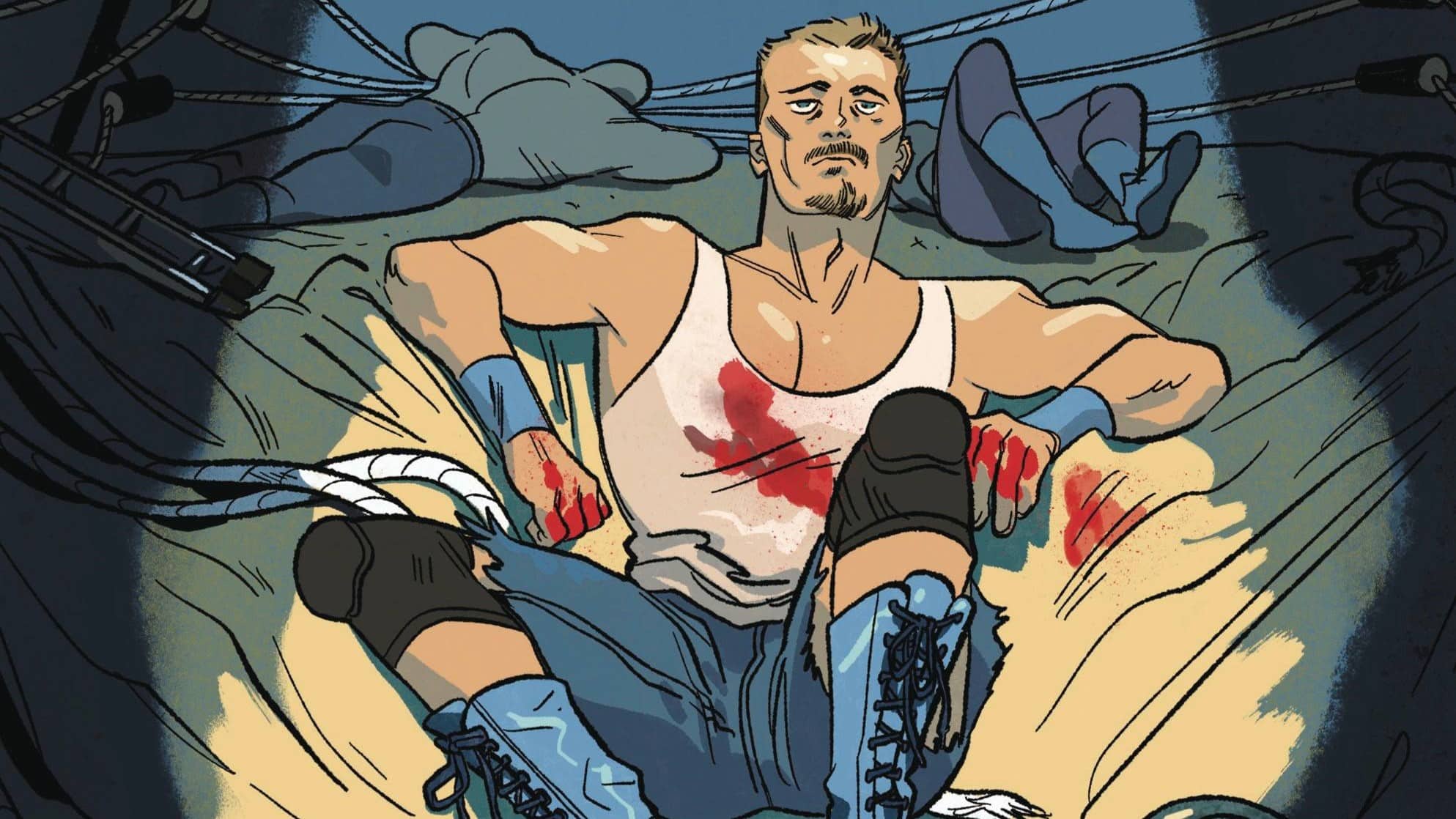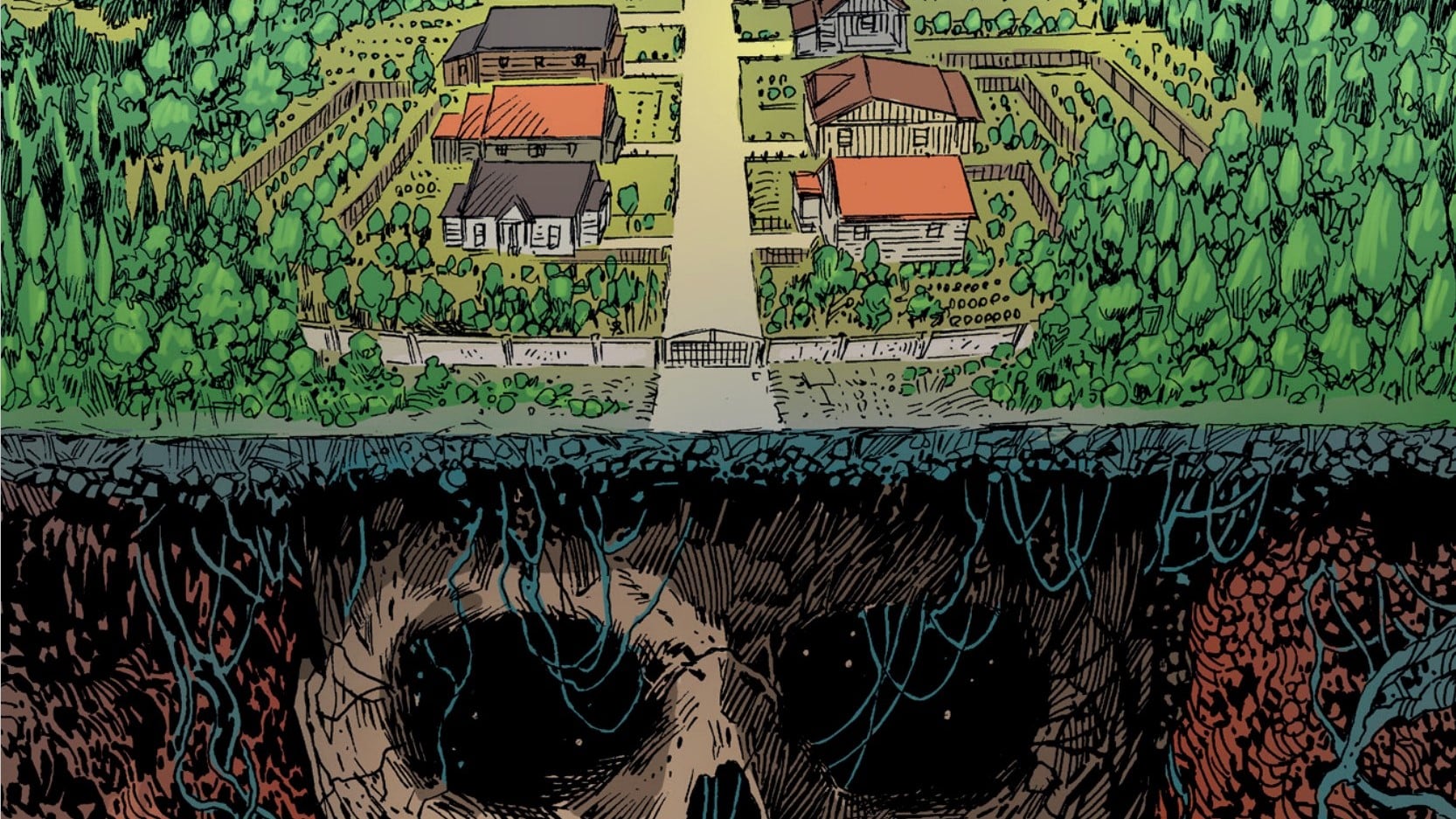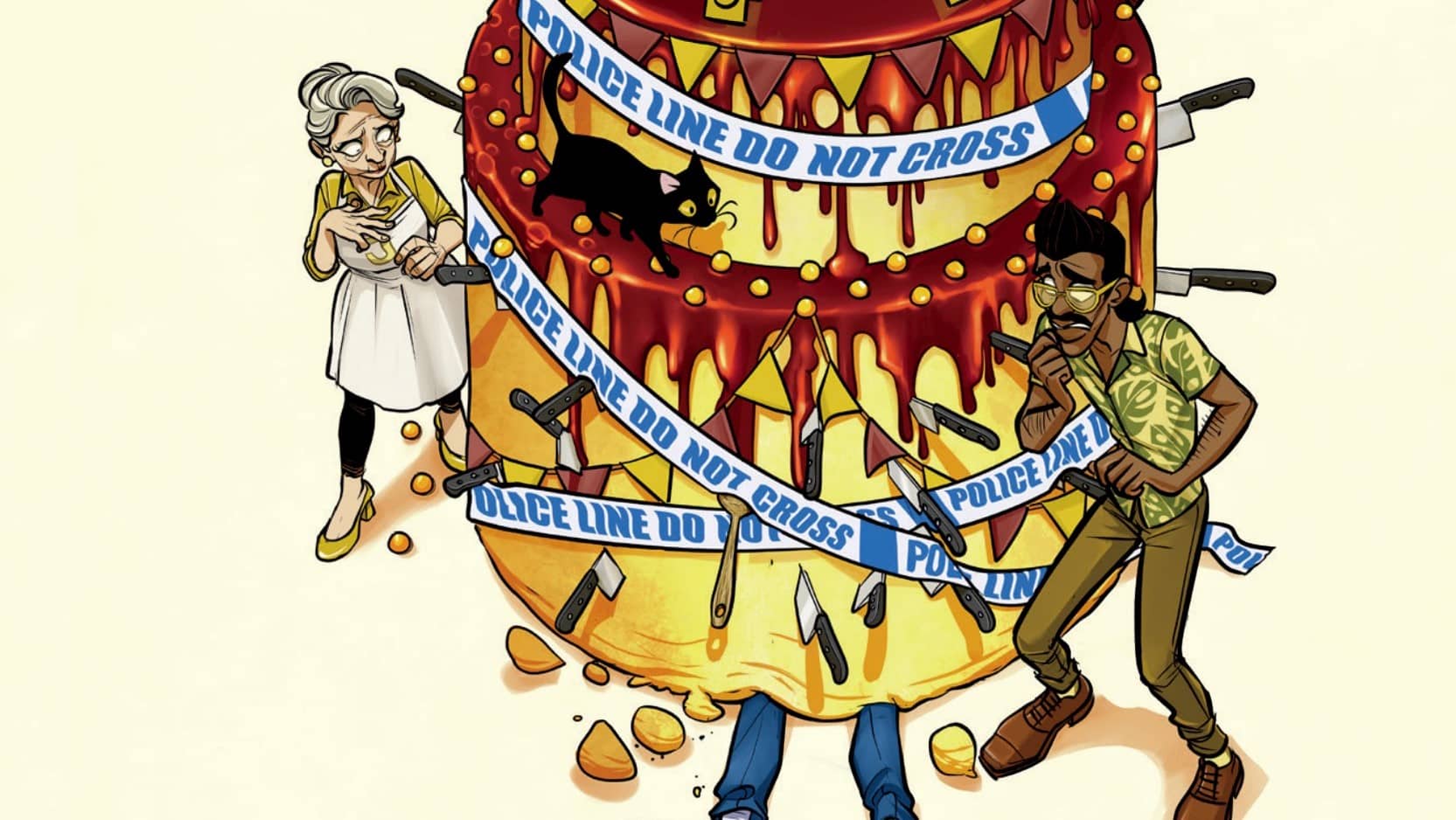If a monk waterskies in the desert with a Nazi dinosaur, am I on acid? It’s either that or Shaolin Cowboy: Cruel to Be Kin #1, with story and art by Geof Darrow, colors by Dave Stewart, letters by Nate Piekos and published by Dark Horse.
For a book called A Town Called Terror, we’re a little light on the “town” and the “terror” in A Town Called Terror #2, written by Steve Niles, drawn by Szymon Kudranski, lettered by Scott O. Brown and published by Image.
Stetson has a heart. Or at least she used to. Slumber #3 is written by Tyler Burton Smith, illustrated by Vanessa Cardinali, colored by Simon Robins, lettered by Steve Wands and published by Image.
Will Nevin: Ian, the Eisner nominations were announced last week, and once again, the newsletter I prep and send to my grandmother each week was not nominated in the category of Best Comics Journalism. (To be fair, the newsletter only covers Garfield collections and the parts of Dilbert that aren’t insipid [of which there are none]. Also, the newsletter was not submitted for nomination.) So if we gave an award in the category of Best Series We’ve Covered, 1) what would we call the award, and 2) what would you give it to?
Ian Gregory: Will, I understand your disappointment. I’d have thought the reissue of my fourth grade Star Wars parody comics, called Stick Wars, might have picked up a nomination or two, but alas. Fortunately, we are a power unto ourselves, and if we were to have an award (“The Freshest Chicken?” “Top Tupperware?”), realistically, we would give it to Newburn.
Will: “Freshest Chicken”? There’s always leftover chicken — I love it, Ian. Also, let’s devote some space to Stick Wars: Revenge of the Sycamore one of these days.
Shaolin Cowboy: Cruel to Be Kin #1: Plot? We Don’t Need No Stinkin’ Plot!

Will: The most disastrous interview I’ve ever had was with an artist/writer who had absolutely no interest in talking plot or the characters in his work. He was purely an artist, focusing on the visuals and content to let the story be an incidental sort of thing. Ian, does it surprise you to learn that interview was with Geof Darrow?
Ian: No. And this is a gorgeous book, but the writing is definitely in service to what Geof Darrow thinks would be fun to draw. I haven’t read any of the other Shaolin Cowboy series, or even Hard Boiled. I can only imagine that there are hardcore Darrow-heads out there, but I’m not one of them. Maybe that makes me a little more critical of this issue; I can’t help but compare it to the works of James Stokoe, another sensational artist motivated by a strong set of film influences. However, Stokoe draws whatever he wants without going for total absurdity in the writing.
Will: This was my favorite book of the week — the Freshest Chicken of the Week, as it were — but I have no idea how to talk about it; I feel like a caveman staring at the innards of an iPhone, marveling at the tiny details and sharp pointy bits. (Can I eat this? Use it to smash other things? Unclear on both points.) There is so much detail packed into every panel — which, unfortunately, makes it a bit difficult when Darrow uses layouts with smaller panels — that there’s always something to stare at in awe. How little story and plot do you think a book can get away with?
Ian: There’s no rule that says a book has to have a certain amount of writing to be good. If you want a fun, beautiful book that is nonstop spectacle, you’ll be satisfied. That said, I’m generally not that person, so I felt a little let down by this book. I’m unfamiliar with Shaolin Cowboy’s setting on a whole, so I was a little perplexed by the high density of pop culture references.
Also, I definitely got little warning signs on the jellyfish-mad-scientist calling the main character (is his name Shaolin Cowboy? Or the Desert Wanderer?) “yellow peril” or “rice junkie” or “little monkey.” We talked about some of the anti-Asian racism that showed up in the first issue of Hit Me, but generally felt that it was a realistic, and potentially plot-important, part of the setting. Here, though? Not a fan.
Will: I’m glad you brought that up, because that racist language should give us pause, especially with his connection to Ed Piskor and Jim Rugg. I’m not ready to say that these are bad guys (although I got the impression Piskor and Rugg were kinda shitheels in the reaction to all of the decent parts of the internet telling them what a shitty idea *that* cover was) but maybe they don’t think through their art, what it means and how people may rightly react to it.
Ian: I can’t help but think it’s a kind of ethos with these ’90s indie comics guys that may run even stronger with them than it does with the old Fantagraphics people: I can do whatever I want, and anyone who says otherwise can fuck off. Artistic freedom to the max, no thoughts, head empty. That’s one way of looking at the world, but I do think it ends up being pretty lazy.
Will: That was my central thought when the Red Room/Maus stuff went down: It takes zero creativity to come up with the most offensive stuff imaginable. Anywho, what was your favorite background nugget? Like me, you stared at some of these pages like you were looking for Waldo, right?
Ian: Oh, it was 100% the desert rock spray painted with the words “Pussy Boy.”
Will: Oh shit, I missed that one. Time to look at those pages for another hour and find it.
A Town Called Terror #2: Short in the Good Spots, Long in the Bad Ones

Will: This is an undoubtedly cool-looking book — I dig the coloring with the aggressive reds and blacks and the motion blur. But goddamn it, Ian, out of two issues worth of material, there’s been exactly three or four interesting pages — and they all come at the end of this issue with Henry doing cool shit at his sister’s monster bar. Why would people put time into developing a concept, prep all these visuals and not do anything fucking fun for 35 pages?
Ian: Szymon Kudranski is doing something really neat with this book. The title page in particular looked great, and there’s a sense of collage and stitched-togetherness to these pages that feels very thematic and spooky. I can safely say I’ve never read a comic that looks like this, and I really like the way this one looks. But boy, is a lot of this boring. Scenes that feel like they should be short (like Henry and his father) are long, and scenes that should be longer (Henry at the bar) are short. We’re still only getting hints here and there about the setting of this book — and considering it’s called A Town Called Terror I would have expected us to get a bit more explanation on The Town Called Terror by now.
Will: Look, I think this could be a good book, I really do. But I’ve got zero interest in the relationship between Henry and his father, Henry and his wife and his wife and the detective investigating his disappearance. Why do you think none of that is working, or is something broken in my brain?
Ian: This series feels like it’s on the cusp of something really interesting. Henry, trying to get out of town, his wife, trying to get in. They’re working on two ends of a problem, and done well, they can meet in the middle at the climax. That’s a classic setup, but everything feels totally perfunctory. The wife’s end of the story feels like it doesn’t matter, and Henry is so reluctant to do anything that everything just drags on. It’s hard to read a story about a main character who doesn’t want to be there. What does Henry want, other than to go back to his wife? He needs another motivation, something to drive him, to keep him from feeling like he’s just whining.
Will: How do you think this series turns it around if it can, and will we be there to see it?
Ian: The monster-town setting (a la Disney’s Halloweentown, don’t @ me) is fine. Kudranski’s art can definitely carry the book if you give the readers more than just a peek at the town. But I need to feel like our main characters are actually trying to do something. Anything. Make something happen other than people talking in a series of rooms about how there’s nothing they can do.
Slumber #3: Don’t Sleep on This Here Book

Will: Unlike A Town Called Terror, this is a series that’s doing a pretty good job of stoking emotional interest in its characters, namely in Stetson and how she’s dealing with the loss of her daughter and her thirst for vengeance. (Presumably we’ll find out what happened to the man in her life, which is only one more absence in her life to navigate.) But this issue also introduces some sadness in the detective’s life — well, additional misery aside from the sadness of having your body hijacked by a serial killer demon. How are you liking this series as it’s starting to come together?
Ian: Last issue of Slumber, I said that I appreciated that it was moving away from the setting-heavy first issue into a more character-focused approach. That’s paid dividends in this issue, where Stetson and Finch are both in the right, and still in conflict. Stetson’s literal “cowboy” attitude likely isn’t helping Finch’s perception of her, either. It’s a shell she’s built around herself to make it possible for her to hunt Valkira without being hurt, but in doing so she’s made herself repugnant to other people. Love that dynamic.
Will: How do you think this series is balancing comedy along with horror and drama? I talked about those relationships — and they really seem to matter! — but this is still a book about nightmares with some pretty funny gags along the way.
Ian: Stetson’s thoughtless murder of Finch’s dreamscape is both funny and horrifying, as is Finch’s ridiculously flimsy disguise. The opening pages, showing Stetson’s daughter’s dreams being infected by Valkira, however, are both sad and horrifying. Slumber is trying to strike an extremely complicated balance, and while I think it’s doing a good job, it does mean that if things don’t get pulled together in the last couple issues, we’re going to have problems.
Will: Finally, I think the next big development in Stetson’s flashback life is her meeting this “dream healer” only for him to either suck or make the situation incredibly worse. Sound like a good assessment of where we’re going?
Ian: I do suspect that the “dream healer” will be her current partner, Ed, who runs the dream machine. I would expect that going into Lyra’s dreams will force Valkira to act, and while it may make things worse in the short-term, Stetson may see Ed as the only way to get revenge on Valkira. That said, there’s lots of ways the next couple issues could go, and I’m pretty excited to see what happens.
Does This Smell OK?
- Sound-Effect Watch: Love in Slumber where the hole in Finch’s chest lines up with the “O” in a nice “BOOM!” from the shotgun that blows him apart. Good stuff!
- Watch This Space Watch: We’ll be picking up some Eisner nominees that the site missed. At least one. At some point. Eventually.
- Good job of shitting on the NRA in Shaolin Cowboy. More people need to do that.
- Leftover Salmon Watch: Jay Starling is joining the group.
- Al Roker’s impromptu leftover croissant casserole might be good, but I question the addition of zucchini or “whatever cooked vegetables you’ve got.” Breakfast should be hearty — in that it should clog your arteries with delicious fats and grease.
- Leftover Salmon Watch II: They’re adding tour dates!
- A TikToker figured out that when you add sugar and booze to leftover coffee and freeze it, it makes for a fun drink. WOW.
- Leftover Salmon Watch III: A real toss-up here as to what’s best: salmon hash with potatoes or salmon cakes with creamy garlic sauce.







